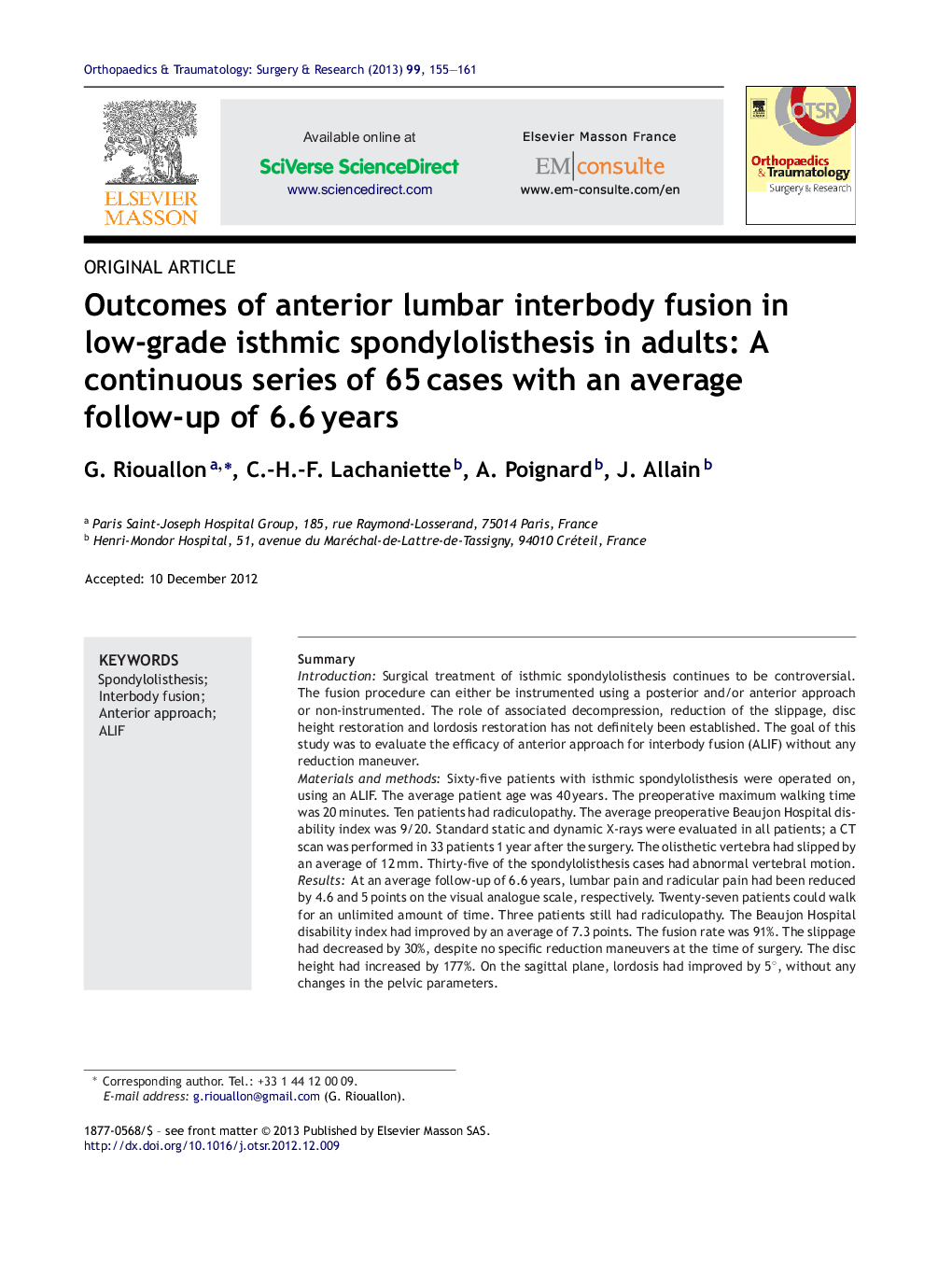| Article ID | Journal | Published Year | Pages | File Type |
|---|---|---|---|---|
| 4081701 | Orthopaedics & Traumatology: Surgery & Research | 2013 | 7 Pages |
SummaryIntroductionSurgical treatment of isthmic spondylolisthesis continues to be controversial. The fusion procedure can either be instrumented using a posterior and/or anterior approach or non-instrumented. The role of associated decompression, reduction of the slippage, disc height restoration and lordosis restoration has not definitely been established. The goal of this study was to evaluate the efficacy of anterior approach for interbody fusion (ALIF) without any reduction maneuver.Materials and methodsSixty-five patients with isthmic spondylolisthesis were operated on, using an ALIF. The average patient age was 40 years. The preoperative maximum walking time was 20 minutes. Ten patients had radiculopathy. The average preoperative Beaujon Hospital disability index was 9/20. Standard static and dynamic X-rays were evaluated in all patients; a CT scan was performed in 33 patients 1 year after the surgery. The olisthetic vertebra had slipped by an average of 12 mm. Thirty-five of the spondylolisthesis cases had abnormal vertebral motion.ResultsAt an average follow-up of 6.6 years, lumbar pain and radicular pain had been reduced by 4.6 and 5 points on the visual analogue scale, respectively. Twenty-seven patients could walk for an unlimited amount of time. Three patients still had radiculopathy. The Beaujon Hospital disability index had improved by an average of 7.3 points. The fusion rate was 91%. The slippage had decreased by 30%, despite no specific reduction maneuvers at the time of surgery. The disc height had increased by 177%. On the sagittal plane, lordosis had improved by 5°, without any changes in the pelvic parameters.ConclusionIn situ ALIF provides results that are comparable to those obtained with other techniques. This study confirms the essential role of fusion in achieving good functional results, given that hypermobility of the olisthetic level contributes to the symptoms generation.Level of evidenceLevel IV. Retrospective study.
